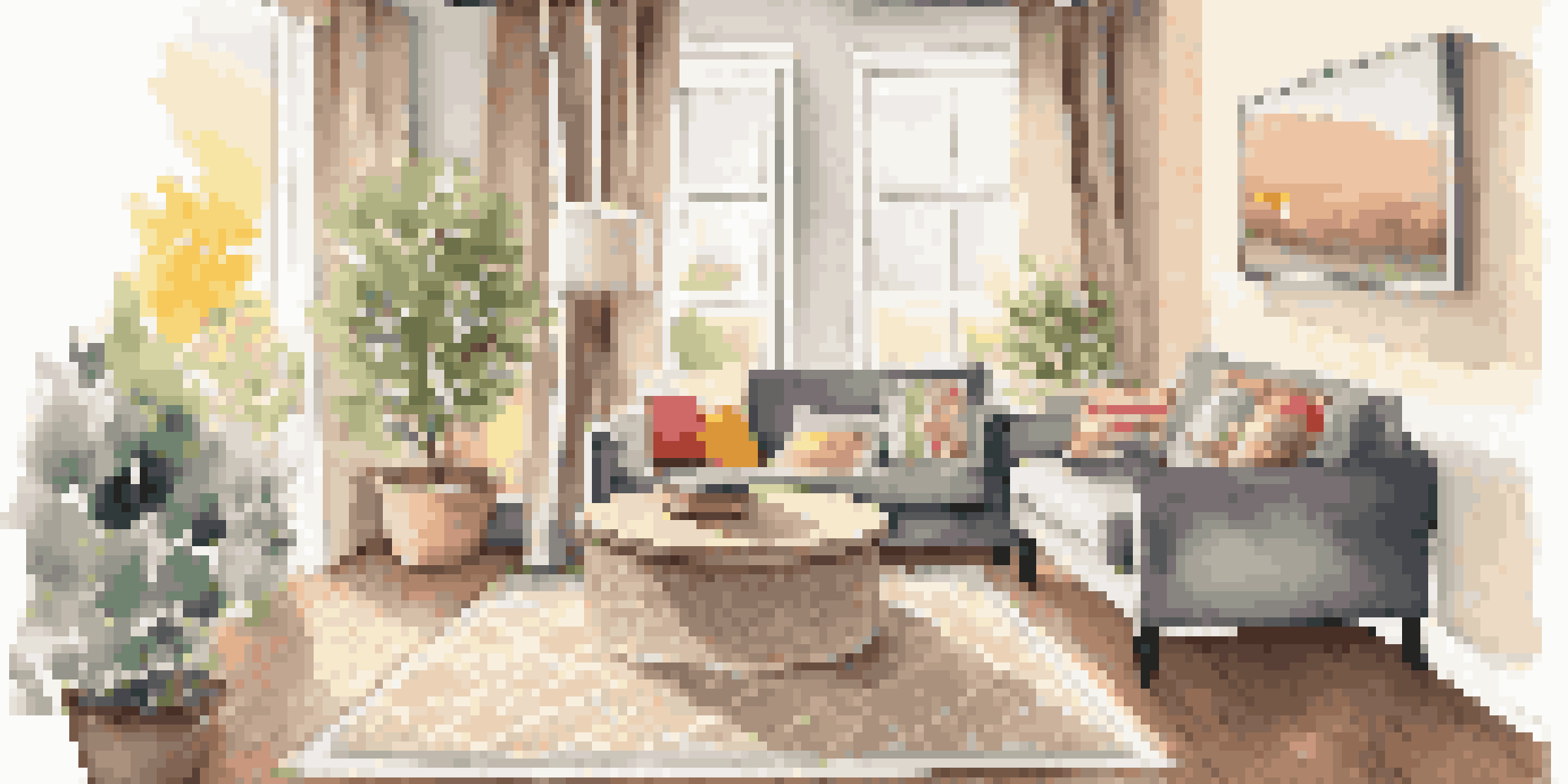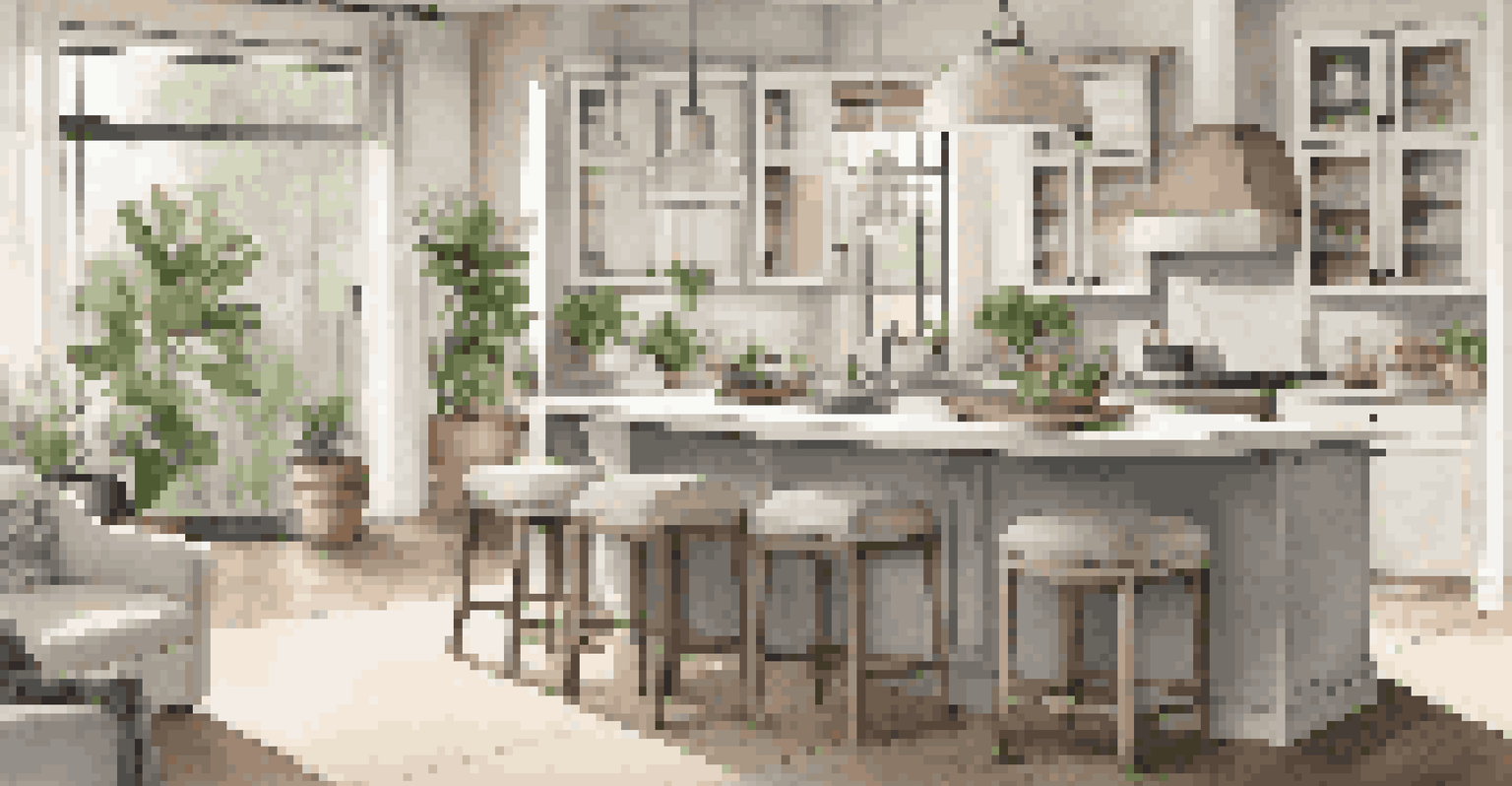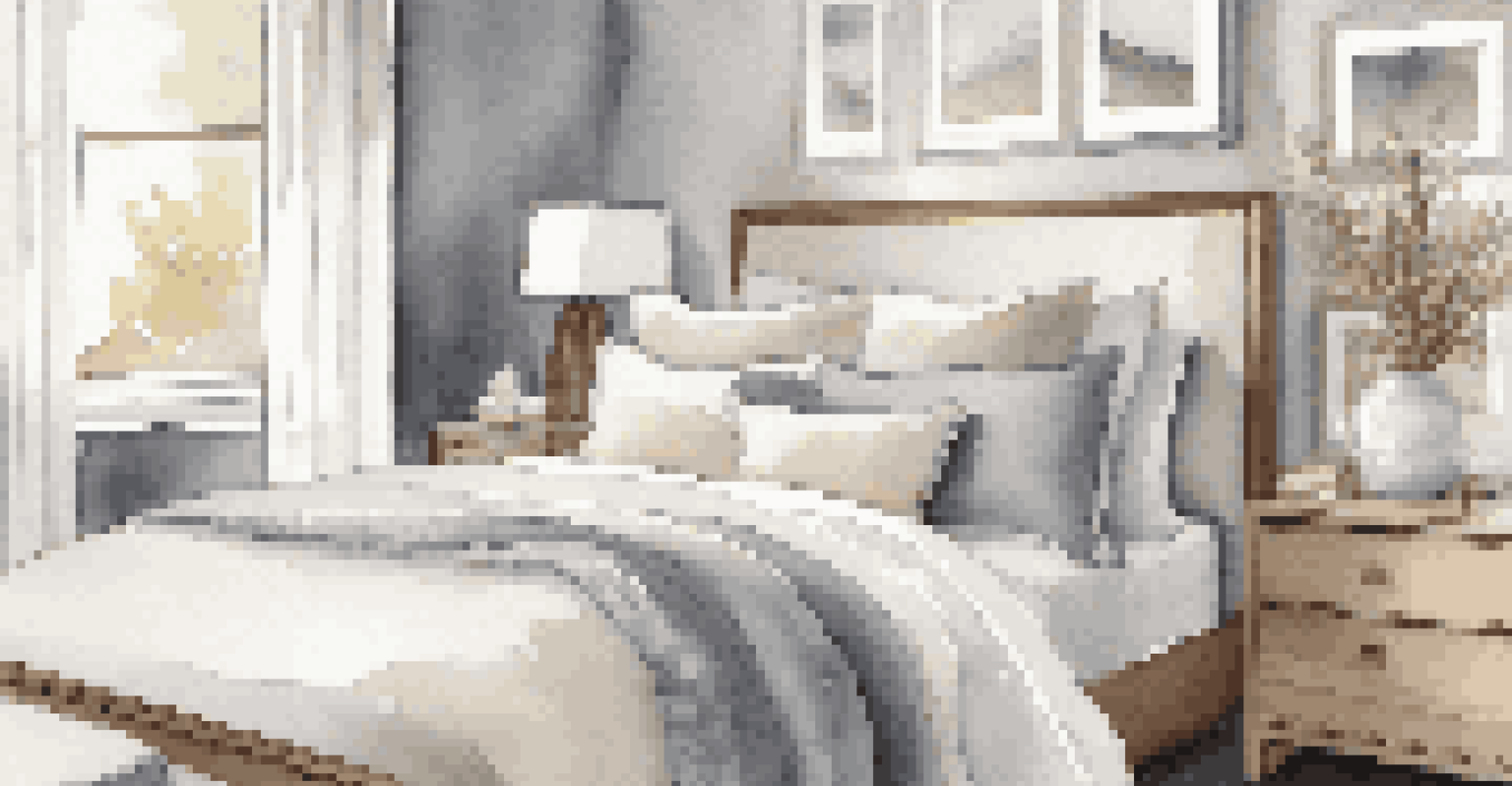Using Neutral Colors to Create Open Feel in Small Rooms

The Power of Neutral Colors in Small Spaces
Neutral colors have an incredible ability to make small rooms feel larger and more inviting. By using shades like whites, beiges, and soft grays, you can create a calming atmosphere that radiates openness. These colors reflect light rather than absorb it, giving the illusion of space, which is especially beneficial in compact areas.
Color is the keyboard, the eyes are the harmonies, the soul is the piano with many strings.
Imagine stepping into a tiny room painted in a warm beige; the soft tone immediately opens up the space, making it feel airy and welcoming. This is because neutral colors work harmoniously with natural light, enhancing whatever sunlight enters. The result is a serene environment that feels less confined and more expansive.
Incorporating neutral colors doesn’t mean your space has to be dull. You can add personality through textures and accessories, like plush pillows or woven baskets, which contrast beautifully against a neutral backdrop, adding depth and interest without overwhelming the senses.
Choosing the Right Neutral Shades for Your Room
When selecting neutral colors, it’s essential to consider the undertones—whether they are warm, cool, or even earthy. For example, a warm white can create a cozy vibe, while a cool gray might lend a more modern feel. Understanding these subtleties can help you choose a shade that complements your existing decor and enhances the desired atmosphere.

Painting walls in a light, neutral shade can serve as a blank canvas for your furniture and decor, allowing them to stand out. Think of it like dressing in a classic little black dress; the neutral color provides a perfect backdrop for vibrant accessories and pops of color. This strategy works wonders in small rooms, where every element counts.
Neutral Colors Expand Small Spaces
Using neutral colors like whites and beiges can create an illusion of spaciousness and enhance the inviting atmosphere of small rooms.
Don’t forget about the ceiling! A ceiling painted in a lighter neutral color can also contribute to the illusion of height. This can make a room feel more spacious vertically, drawing the eye upward and enhancing that open feel we’re aiming for.
Using Neutral Colors to Enhance Natural Light
One of the best features of neutral colors is their ability to amplify natural light. In small rooms with limited windows, a light-colored palette can maximize the sunlight that streams in, creating a brighter, more inviting space. Think of how a clear blue sky brightens your day; similarly, light neutrals can uplift the mood of a room.
Simplicity is the ultimate sophistication.
By strategically placing mirrors or reflective surfaces in a room painted in neutral colors, you can further enhance this effect. Mirrors act like windows, bouncing light around the space and creating a sense of depth. It’s a simple yet effective trick that transforms how a small room feels and functions.
Moreover, using sheer curtains in neutral shades can maintain privacy without blocking too much light. This allows the room to remain bright and inviting, reinforcing that open feel we’re trying to achieve. The combination of neutral walls and light-filtering fabrics creates a harmonious flow of light throughout the space.
Layering Textures to Add Depth with Neutrals
While neutral colors can create a serene backdrop, layering different textures is key to keeping the space visually interesting. Consider a mix of materials like soft linens, smooth woods, and plush rugs to add dimension and warmth. This approach prevents the space from feeling flat and lifeless.
For instance, imagine a small living room with a neutral color palette featuring a chunky knit throw, a sleek leather sofa, and a woven jute rug. Each texture adds its own character while maintaining a cohesive look. This layered effect can make a small room feel much more inviting and comfortable.
Texture Adds Interest to Neutrals
Incorporating various textures, such as linens and woods, can prevent neutral palettes from feeling flat and enhance the warmth of a room.
Additionally, using textured decor items like ceramic vases, metal accents, or wooden furniture can enrich your neutral scheme. These elements can serve as focal points without overwhelming the room, ensuring that it remains a tranquil, open space.
Incorporating Accent Colors with Neutral Bases
While neutral colors are fantastic for creating an open feel, don’t be afraid to introduce accent colors that pop. A few thoughtfully chosen accessories can bring life to a neutral room without compromising its spacious ambiance. Think of a bright blue cushion or a vibrant piece of art; these elements can act as joyful surprises.
Using accent colors strategically can draw attention to certain areas of the room, guiding the eye around the space. For example, a colorful rug can anchor a seating area without making it feel cramped. This technique allows you to maintain an airy feel while adding personality and warmth.
Just remember to keep your accent colors balanced. Too many bold hues can overwhelm a small room, so choose one or two that complement your neutral base. This way, you can enjoy the best of both worlds: the serenity of neutrals and the vibrancy of colors.
Furniture Choices That Enhance an Open Feel
The type of furniture you choose can significantly affect how open a small room feels. Opting for pieces that are appropriately scaled and have a light visual weight is essential. For instance, a sleek, low-profile sofa can create a more open sightline compared to a bulky, overstuffed one.
Transparent furniture, such as glass coffee tables or acrylic chairs, can also contribute to a lighter atmosphere. These pieces virtually disappear, allowing the space to feel less cluttered and more expansive. It’s like wearing a pair of stylish, barely-there sandals that add elegance without bulk.
Accent Colors Bring Life to Neutrals
Thoughtfully chosen accent colors can enliven a neutral room while maintaining its airy feel, providing balance and personality.
Additionally, multi-functional furniture, like a storage ottoman or a fold-out desk, can keep your room organized and open. This way, you can enjoy the benefits of a small space without sacrificing style or function. Each piece should serve a purpose, enhancing the overall feel of the room.
Creating Cohesion with Open Floor Plans
In smaller homes, open floor plans are a popular choice as they naturally create a sense of space. Using neutral colors throughout these areas can maintain cohesion and flow. When different sections of a room share a similar color palette, it visually expands the space and creates a seamless transition.
Think of your home as a flowing river; each room is a bend that leads into the next. By using neutrals, you can create gentle transitions that guide the eye without interruption. This approach not only enhances the feeling of spaciousness but also adds a sense of calm and harmony to your living environment.

In open layouts, consider using different textures or subtle variations of the same neutral color to define separate areas. For instance, a slightly darker shade on a kitchen island can delineate the cooking area while still keeping the overall feel light and open. This method allows for distinct spaces without closing off the room.